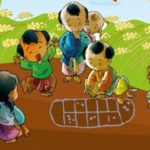The betrothal ceremony is an extremely important ritual in Vietnamese wedding customs. It is considered a crucial prelude to the wedding day, where the groom’s family presents betrothal gifts to the bride’s family, formally asking for their blessing to marry. Upon accepting these gifts, the bride’s family gives their consent, and wedding preparations begin.
1 What is a Betrothal Ceremony?
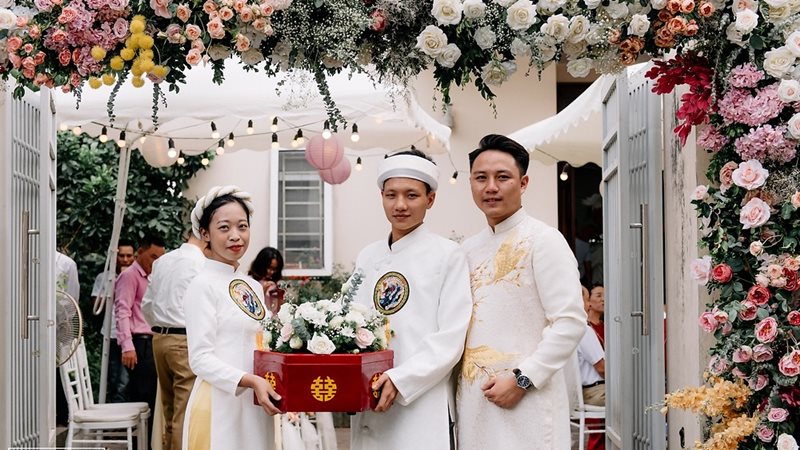 What is a betrothal ceremony?
What is a betrothal ceremony?
The betrothal ceremony is a deeply rooted tradition in Vietnamese culture, serving as a vital precursor to the wedding day. During this ceremony, the groom’s family presents betrothal gifts, or “tráp,” to the bride’s family. This act symbolizes a formal request for the bride’s hand in marriage. The acceptance of these gifts by the bride’s family signifies their consent, and the couple is then considered officially engaged to be married.
The betrothal ceremony is steeped in symbolism and tradition. It is often seen as a way to honor and respect the bride’s family and seek their blessing for the union. The gifts presented during this ceremony are carefully selected and carry significant meaning, representing the groom’s family’s sincerity and good intentions.
2 What are the 9 Betrothal Trays?
Betel and Areca Tray
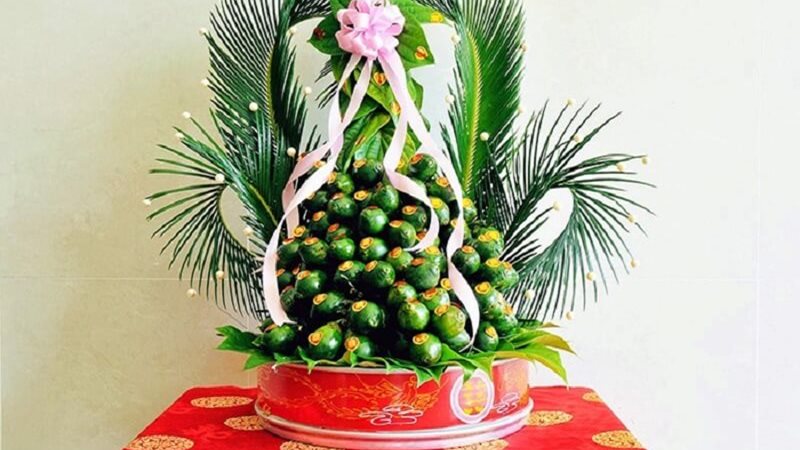 Betel and Areca Tray
Betel and Areca Tray
The first tray presented during the betrothal ceremony contains betel leaves and areca nuts. This combination is symbolic in Vietnamese culture, often used to initiate important conversations and signify the start of new beginnings. The groom’s family carefully selects fresh, green betel leaves and ripe areca nuts, ensuring they are presented in an aesthetically pleasing manner.
Wine and Medicine Tray
 Wine and Medicine Tray
Wine and Medicine Tray
The second tray contains wine and traditional medicine. Wine is a symbol of gratitude toward ancestors and respect for the bride’s family. The medicine represents the groom’s family’s wishes for good health and longevity for both families.
Lotus Seed Tray
The third tray features lotus seeds, which hold symbolic significance in Vietnamese culture. Lotus seeds are believed to represent nobility and elegance, often associated with the beauty and grace of ancient brides. By including lotus seeds in the betrothal gifts, the groom’s family expresses their love and admiration for their future daughter-in-law.
Spouse Cake and Green Bean Cake Tray
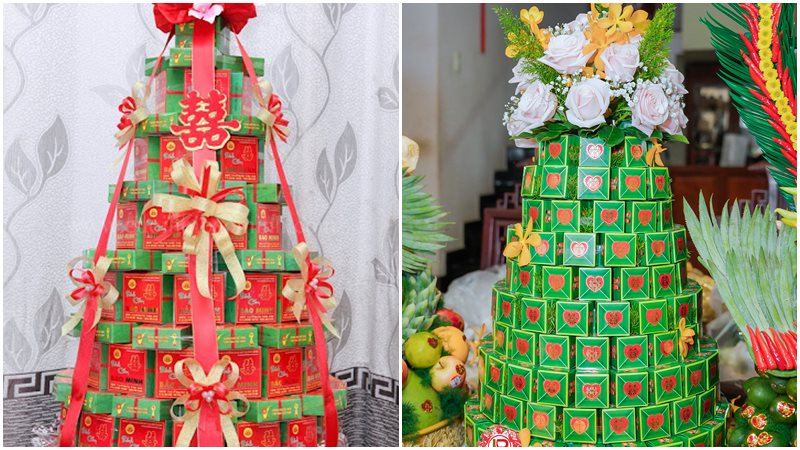 Spouse Cake and Green Bean Cake Tray
Spouse Cake and Green Bean Cake Tray
The fourth tray contains Spouse Cake and Green Bean Cake, two traditional Vietnamese confections. Spouse Cake, also known as “bánh phu thê,” symbolizes the deep bond and harmony between the couple. Green Bean Cake, or “bánh cốm,” represents the sweetness and romance of their love. These cakes are believed to bring good luck and bless the couple with a happy and fulfilling marriage.
Fruit Tray
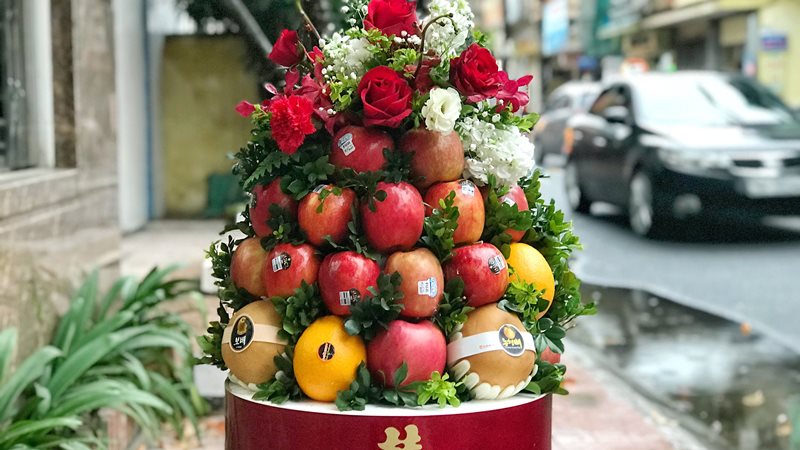 Fruit Tray
Fruit Tray
The fruit tray is a symbol of blessings for the couple’s future children and a sweet and romantic life together. It is believed that the variety of fruits represents an abundance of choices and options for the couple’s future offspring.
Red Sticky Rice and Green Bean Tray
The red sticky rice and green bean tray is a colorful and symbolic offering. The red color of the sticky rice is associated with good luck and fortune, while the green beans symbolize prosperity and abundance. Together, they represent the couple’s wishes for a lucky, prosperous, and fulfilling life together.
Roasted Piglet Tray
The roasted piglet tray is a symbol of wealth and prosperity for the bride and groom. It is believed that the piglet brings good luck and financial success to the couple. This tray also represents a blessing for the couple to have children and prosper in their new life together.
3 Traditional Order of Carrying the 9 Betrothal Trays
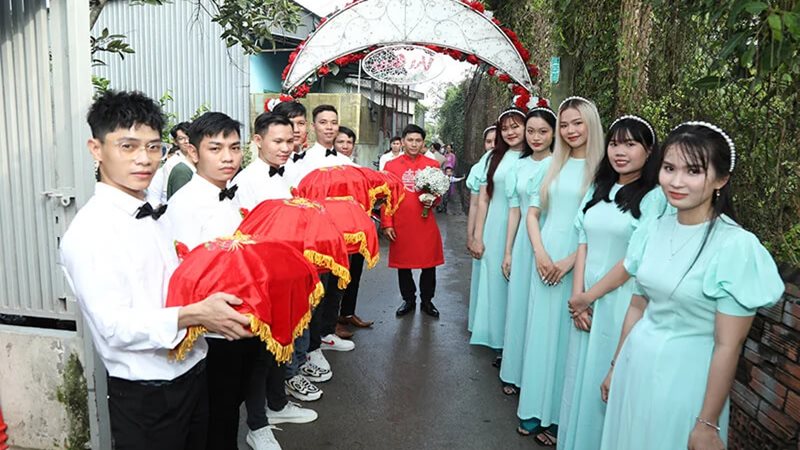 Traditional Order of Carrying the 9 Betrothal Trays
Traditional Order of Carrying the 9 Betrothal Trays
When presenting the betrothal gifts, the groom’s family follows a specific order, which is considered important in Vietnamese tradition:
-
Betel and Areca Tray, followed by the Wine and Medicine Tray, Roasted Piglet Tray, Fruit Tray, Red Sticky Rice and Green Bean Tray, Lotus Seed Tray, and finally, the Spouse Cake and Green Bean Cake Tray.
4 Important Considerations for the 9 Betrothal Trays
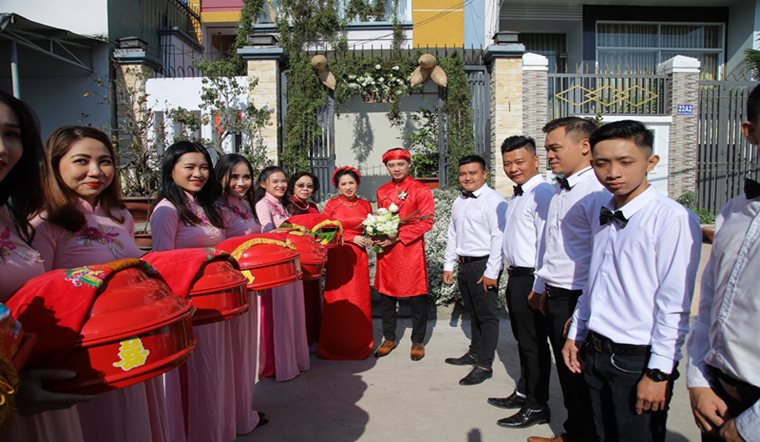 Important Considerations for the 9 Betrothal Trays
Important Considerations for the 9 Betrothal Trays
-
The Betel and Areca Tray is always placed first and in the center of the table, symbolizing the start of the ceremony.
-
The remaining trays can be arranged flexibly around the central tray, creating a harmonious and aesthetically pleasing display.
This article provides a detailed guide to the 9-tray betrothal ceremony and the significance of each gift. We hope that through this article, you have gained a deeper understanding of this important Vietnamese tradition and are now more knowledgeable about the betrothal ceremony and its role in Vietnamese weddings.

























